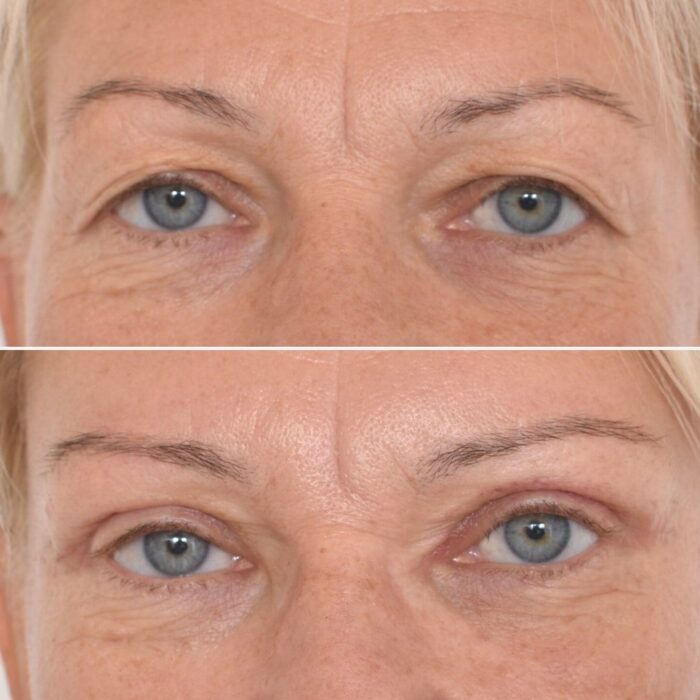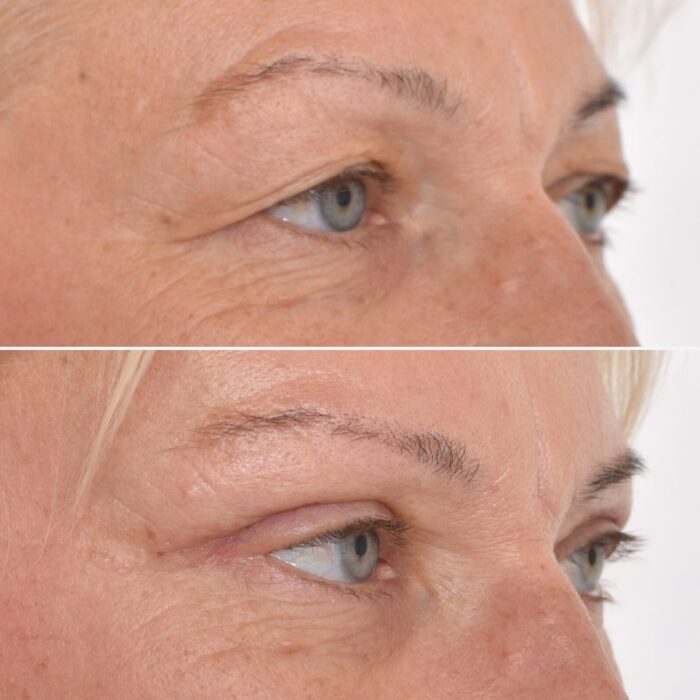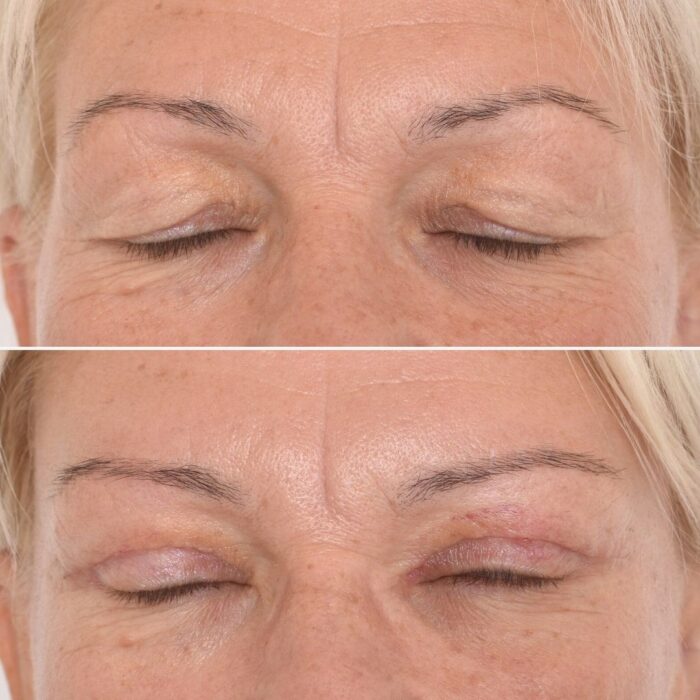EYELID SURGERY
It has been well said that the eyes are a mirror of our soul; however, over time the skin becomes thinner and the beauty of the eyes becomes covered by droopy eyelids, and wrinkles form in the corners. Some people also develop obvious “bags” under their lower eyelids. As a result, the face looks tired and the glance appears to have lost vitality.
Droopy eyelids can also lead to impaired vision, which causes difficulties in performing everyday tasks, such as reading, driving, working on the computer, and the eyes get tired faster. Droopy eyelids can also become the cause of eye inflammation and more frequent headaches.
Eyelid correction is suitable for you if:
• The skin of your eyelids is flabby, causing the droopiness of the eyelids;
• The skin of your eyelids is bloated, swollen;
• You want to remove the ageing-caused wrinkles around your eyes;
• Obvious “bags” and deep wrinkles have developed under the eyes;
• You experience recurrent eye inflammations and headaches;
• Droopy upper eyelids cause difficulty reading, driving, or working on a computer;
• You have a congenital disorder of the eyelid levator development.
Eyelid correction can bring vitality back to your glance, give your face a youthful charm, and raise the quality of life to a higher level. Surgery can be performed on both upper and lower eyelids.
It is important to know:
• The surgical scars are not noticeable because they are hidden by the natural folds around the eyes;
• You can return to work in a few days;
• It is recommended to start exercising in 3–4 weeks;
• During the first few weeks, the eyes may tear and be more sensitive to light.
1. Consultation with the surgeon
During the consultation, the surgeon will examine your eyelids, tell you about the possible risks, and assess your expectations. You will also discuss your health condition, any previous surgery (if any), medications you are taking, and what encouraged you to choose this surgery. It is important that you let know your surgeon if you have any thyroid diseases or diabetes.
2. Preparation for the operation
In order for the operation to be performed successfully and for the best results to be achieved, your preparation for the procedure is also important, so you should: stop taking aspirin, anti-inflammatory or some other medications as well as quit smoking because this affects the healing process.
3. Operation
The duration of the operation is 1–3 hours, depending on the individual situation of each patient and on whether we perform the plastic surgery of only the upper/lower or both eyelids.
The procedure is usually performed under local or general anaesthesia.
Surgical incisions can be performed in two ways:
• On the inside of the eyelid (if only the fat, but not the excess skin needs to be removed). By performing the incision, the fat bags are exposed and the required amount of fat is removed.
• On the outside of the eyelid. The incision is made under the lower lashes and the skin is retracted to allow the deeper fat bags to be reached. The required amount of fat and/or skin is removed from them.
4. Results and healing
The duration of recovery may be different for each patient, but it is particularly prolonged by smoking. After the effect of aesthetics disappears, you may need to take painkillers.
Eyelid Plastic Surgery Rezults


